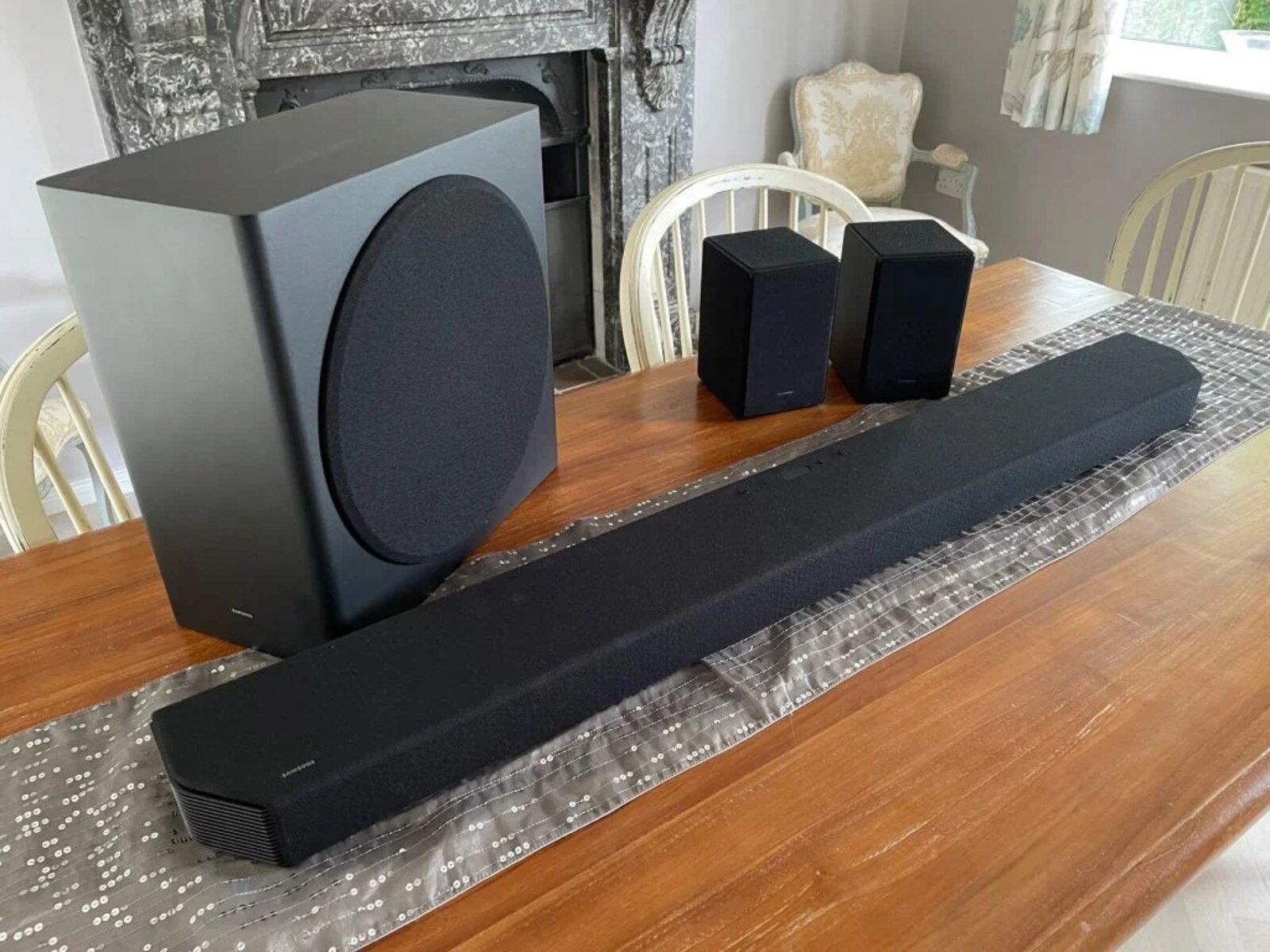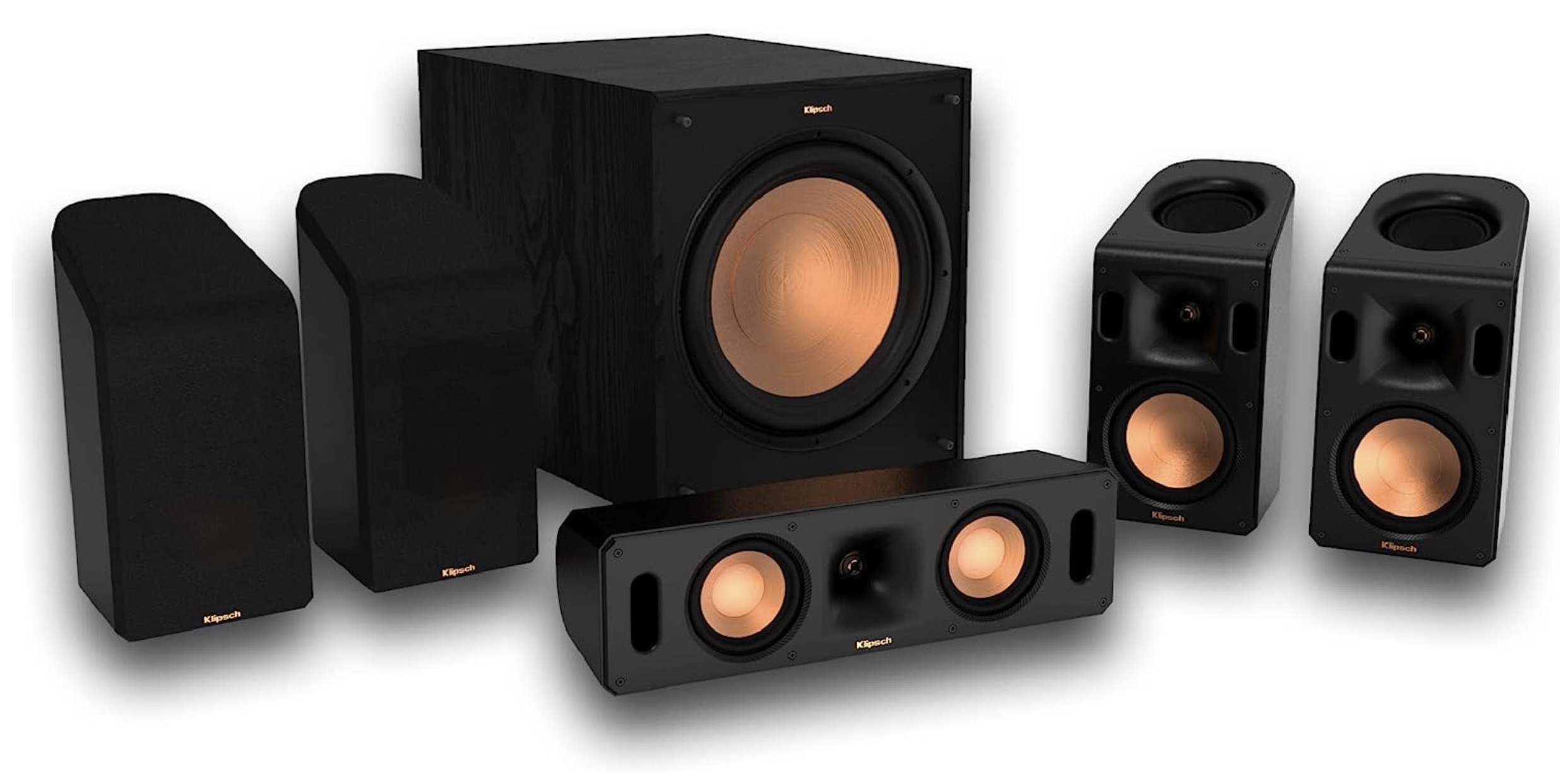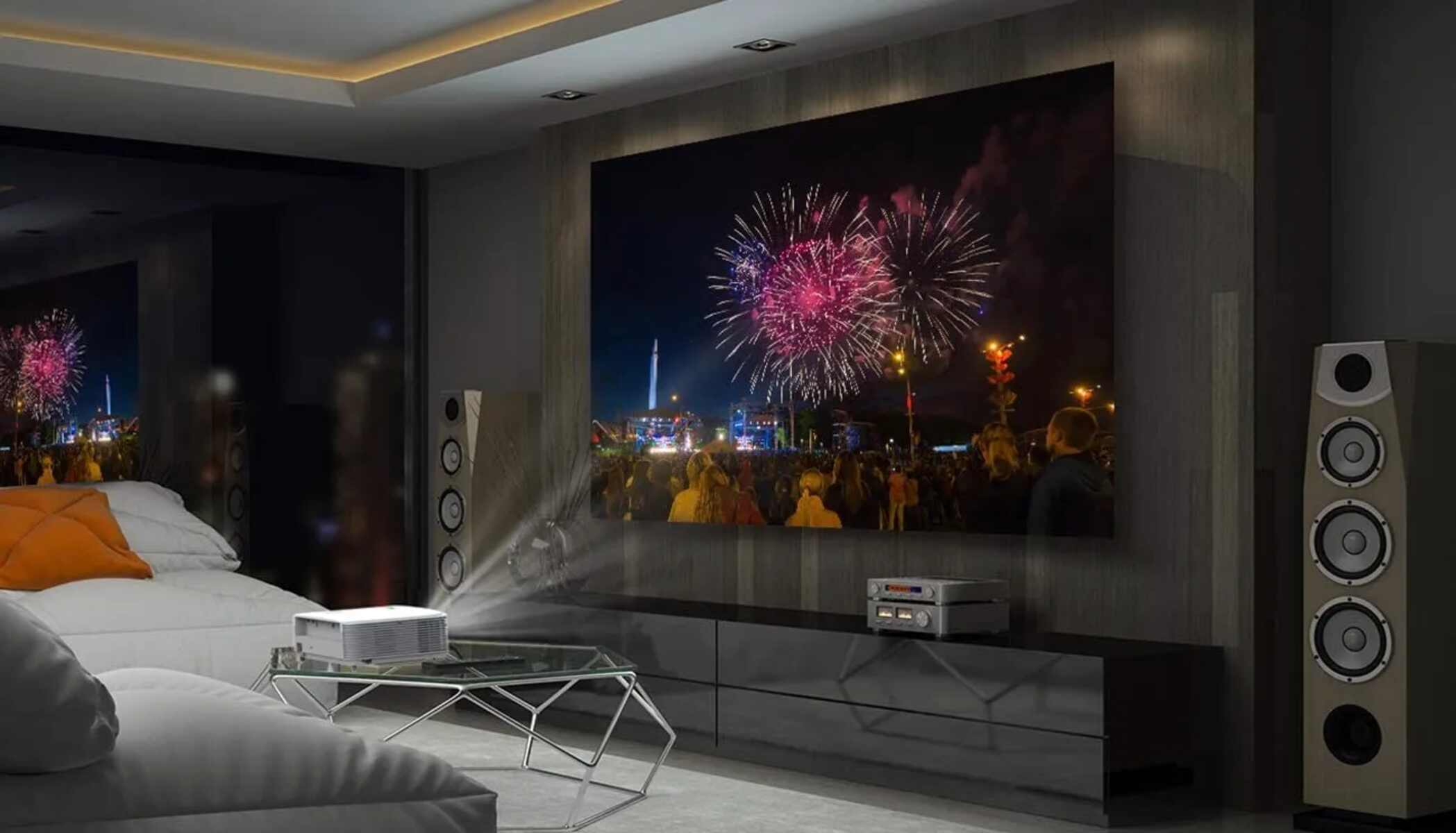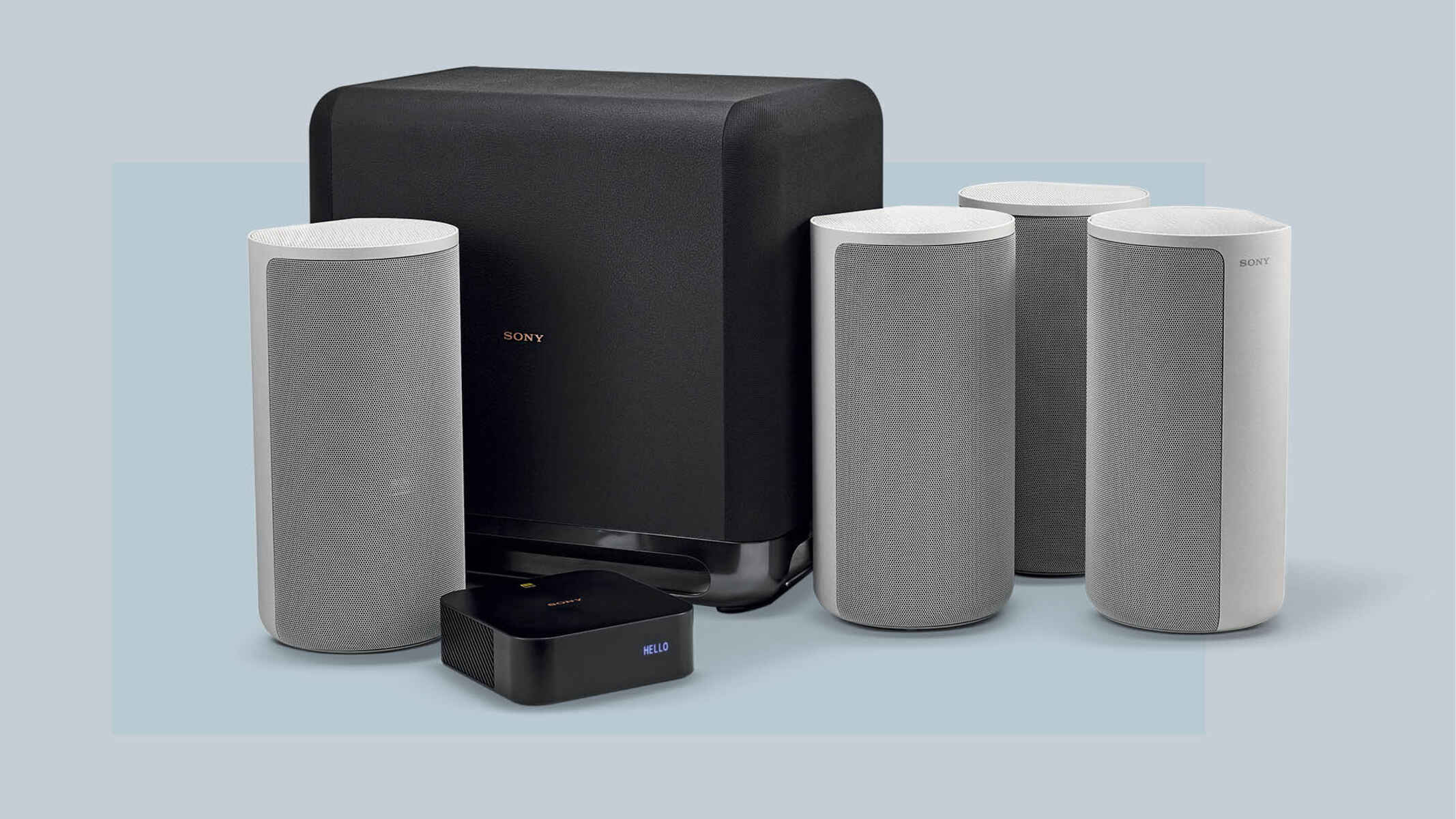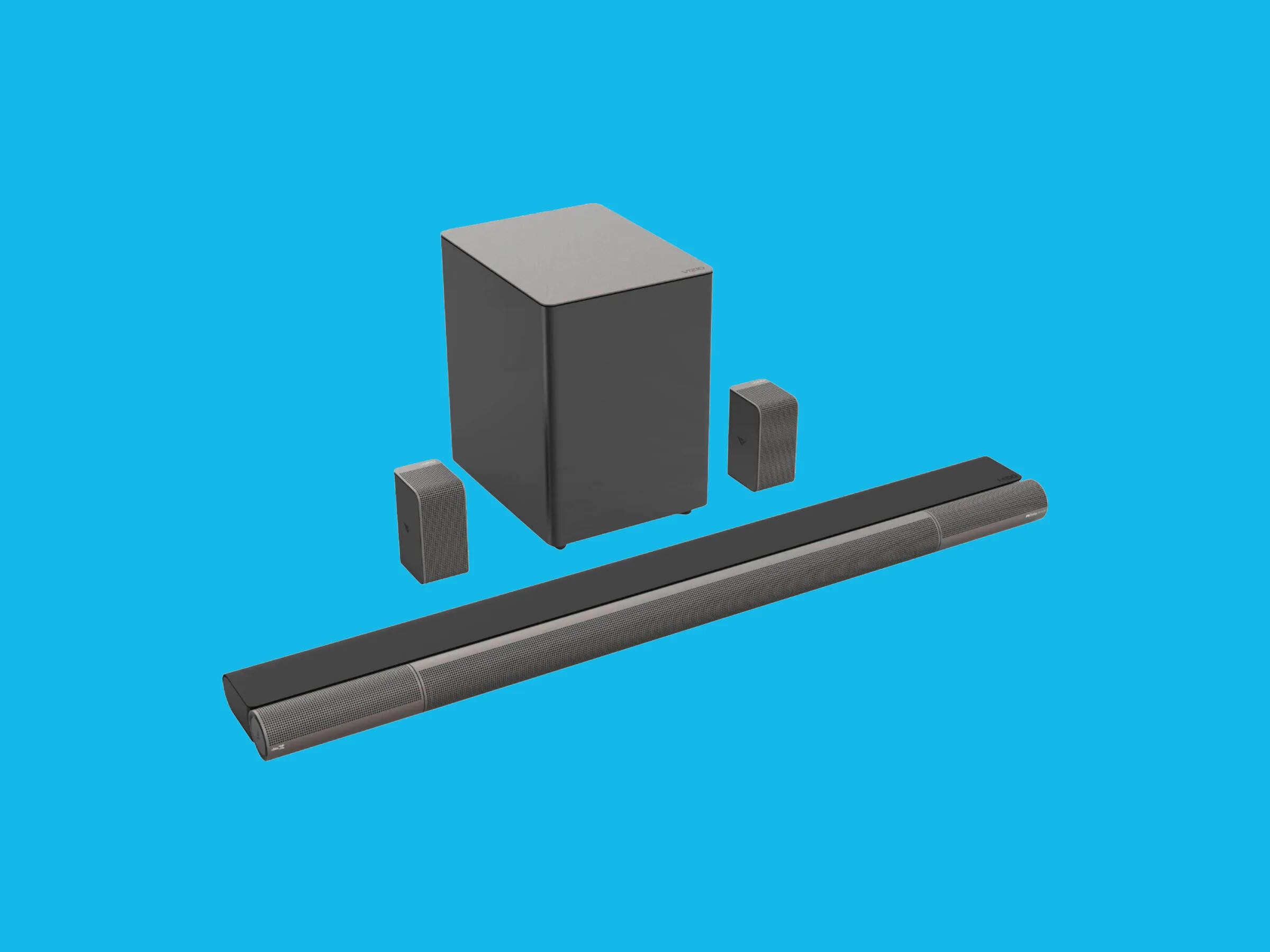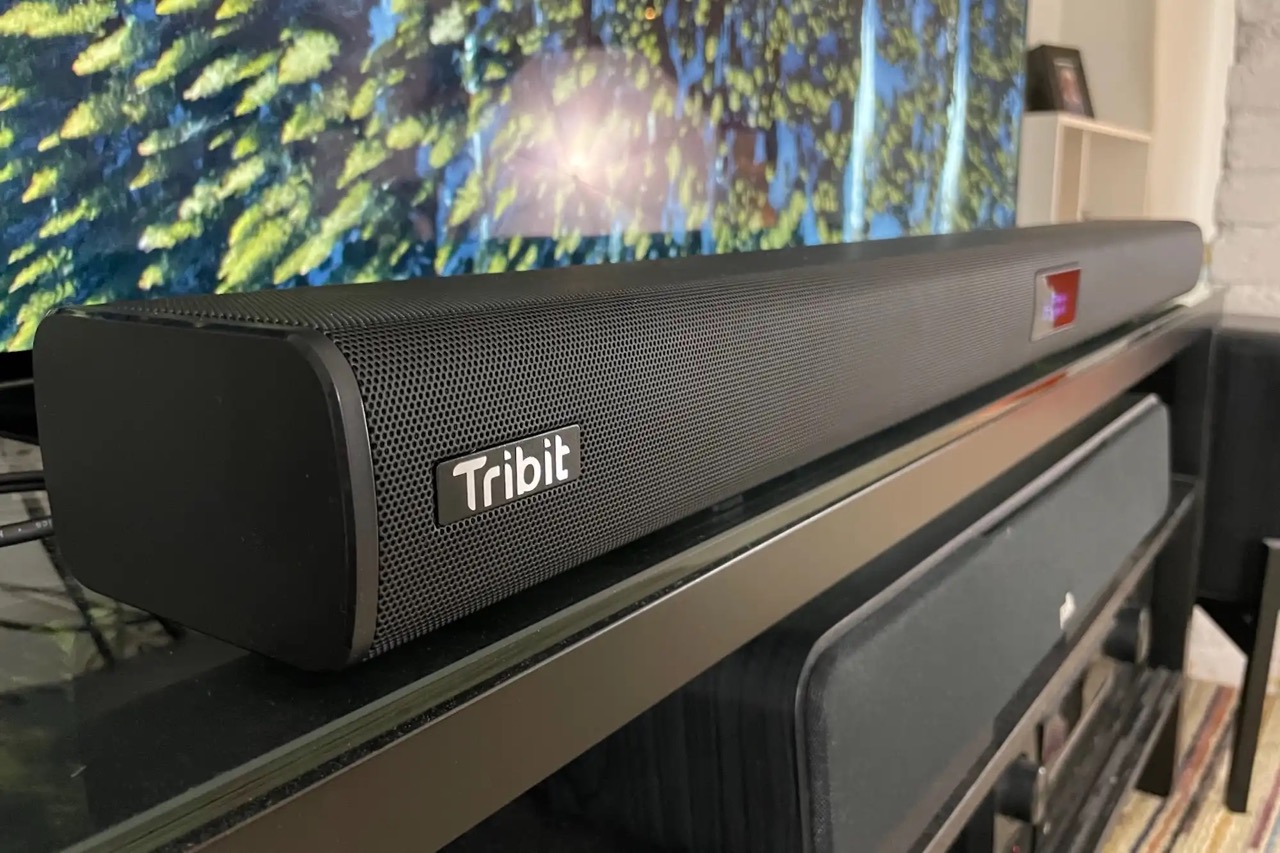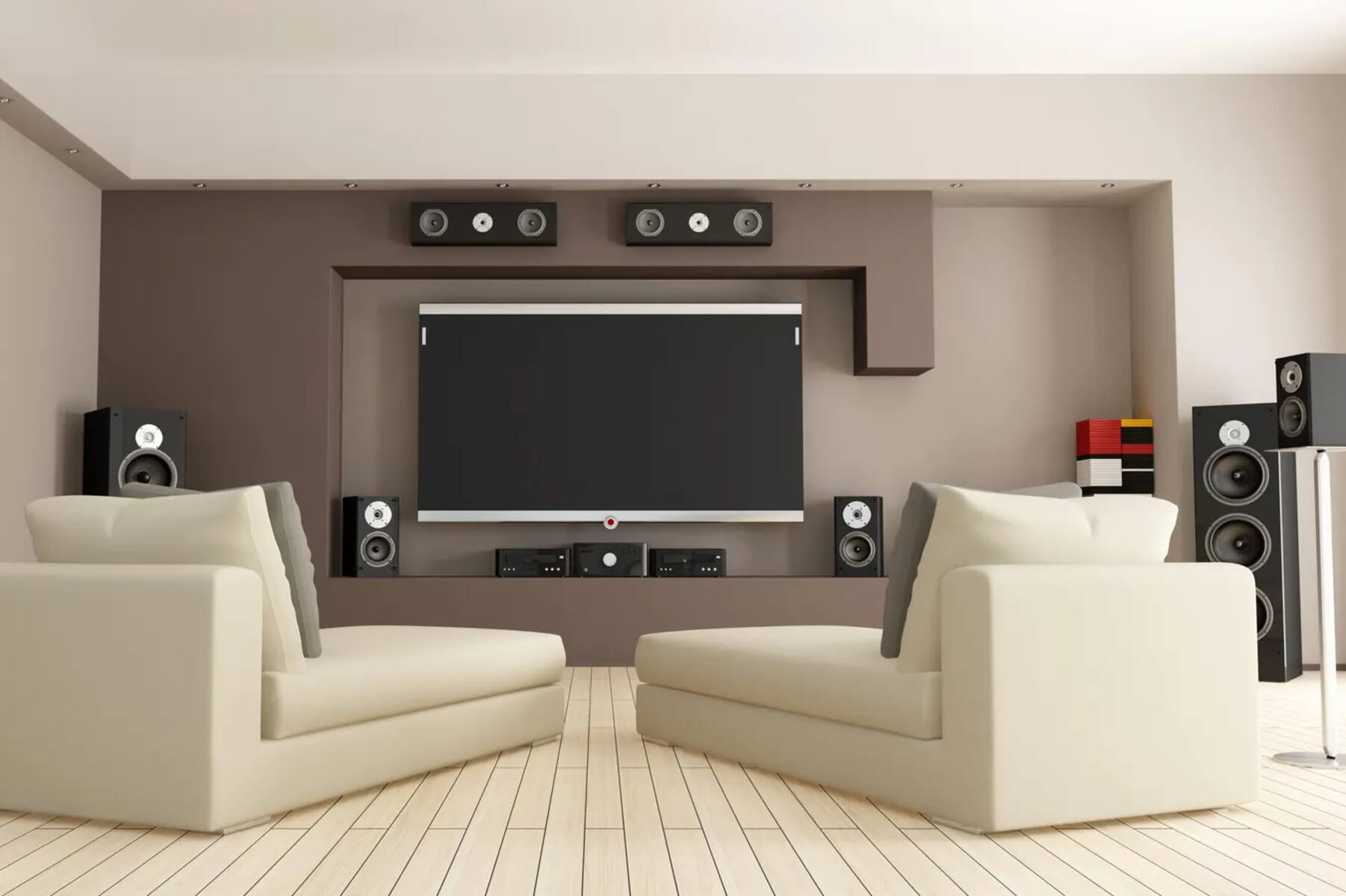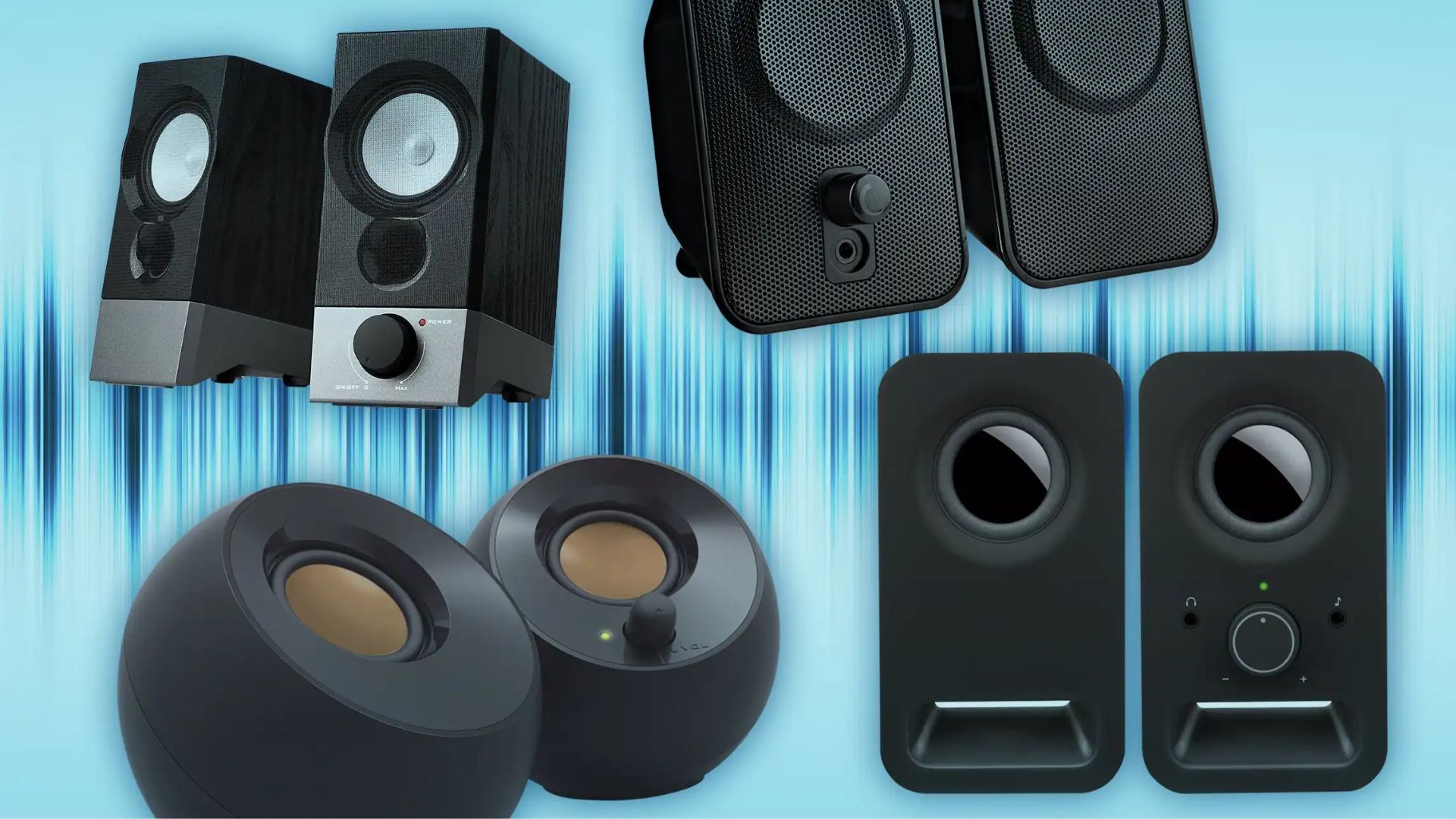Introduction
Welcome to the world of surround sound systems! If you’re considering upgrading your current speaker setup, you’re in the right place. Upgrading your surround sound system can greatly enhance your audio experience, immersing you in a world of rich and dynamic sound.
Whether you’re a movie buff, a gaming enthusiast, or a music lover, upgrading your speakers is a worthwhile investment. However, with so many options available, it can be overwhelming to decide where to start. That’s where we come in.
In this article, we will guide you through the process of upgrading your surround sound system speakers. We’ll discuss the different components of a surround sound system and help you determine which ones to prioritize.
Before we dive into the specifics, it’s important to note that the quality of your room acoustics plays a significant role in the overall sound experience. Even with top-of-the-line speakers, an untreated room can result in subpar audio performance. So, if you haven’t already, consider optimizing your room’s acoustics by adding sound-absorbing panels or rearranging furniture to eliminate any potential audio reflections.
Now, let’s explore the key components of a surround sound system and discuss which ones you should consider upgrading first.
Room Acoustics
Before diving into speaker upgrades, it’s crucial to understand the impact of room acoustics on your audio experience. The size, shape, and furnishings of your room can significantly affect the sound quality produced by your surround sound system.
When sound waves travel, they bounce off walls, ceilings, and other objects in the room. These reflections can either enhance or distort the audio, depending on the room’s acoustics. For optimal sound reproduction, it’s essential to minimize unwanted reflections and echoes.
One way to improve room acoustics is by adding sound-absorbing materials. Acoustic panels, made of materials like foam or fabric, can be placed on walls, ceilings, or even behind the main listening area. These panels absorb excess sound energy, reducing echoes and creating a more controlled listening environment.
Another consideration is the placement of your speakers. Experiment with different speaker locations to find the sweet spot that delivers the best soundstage and imaging. Avoid placing speakers too close to walls, as this can cause unwanted bass buildup and affect the overall balance of the sound.
Additionally, furniture and other objects in the room can impact sound quality. Try to position furniture strategically to reduce obstructions or reflections. Experimenting with different room setups can make a noticeable difference in the overall audio performance of your surround sound system.
While optimizing room acoustics may not be the most glamorous part of upgrading your speakers, it is an essential foundation for achieving the best possible audio experience. Take the time to evaluate your room’s acoustics and make any necessary adjustments before proceeding with speaker upgrades.
Now that we’ve covered the importance of room acoustics, let’s move on to explore the specific speaker components and discuss which upgrades you should prioritize to enhance your surround sound system.
Subwoofer
When it comes to creating a truly immersive audio experience, a subwoofer is a vital component of any surround sound system. The subwoofer is responsible for reproducing low-frequency sounds, such as deep rumbles and booming bass, adding depth and impact to your audio.
If you’re looking to upgrade your surround sound system, the subwoofer should be one of your top considerations. A high-quality subwoofer can enhance the overall sound quality and deliver a more realistic and powerful audio experience.
When selecting a subwoofer, there are a few factors to consider. Firstly, you’ll want to ensure that the subwoofer’s power rating matches or exceeds the capabilities of your other speakers. This will ensure a seamless integration of sound, with balanced bass response throughout your system.
Size and placement are also important considerations. Larger subwoofers typically deliver deeper, more robust bass, but they may take up more space in your room. Consider the size of your room and the available placement options to determine what size subwoofer will work best for you.
Placement is crucial for achieving optimal bass response. Experiment with different locations in your room to find the spot that delivers the best bass performance. The general rule of thumb is to place the subwoofer near a wall, as this can help enhance bass output. However, avoid corners, as they can cause excessive bass buildup and lead to boomy or muddy sound.
Lastly, consider whether you prefer a passive or powered subwoofer. Passive subwoofers require an external amplifier, whereas powered subwoofers have a built-in amplifier. Powered subwoofers tend to be more convenient, as they eliminate the need for an additional amplifier and simplify installation.
Investing in a high-quality subwoofer can significantly elevate your surround sound system’s performance. With its ability to reproduce deep, impactful bass, the subwoofer adds a whole new dimension to your audio experience, immersing you in the action and enhancing the realism of sound effects and music.
Now that we’ve covered the importance of a subwoofer, let’s move on to discuss the upgrade options for front speakers in your surround sound system.
Front Speakers
When it comes to creating an immersive surround sound experience, the front speakers play a crucial role. These speakers are responsible for handling most of the audio and provide the foundation of your surround sound system.
If you’re considering upgrading your surround sound system, the front speakers should be high on your list. Upgrading to high-quality front speakers can greatly enhance the clarity, detail, and overall power of your audio.
There are several factors to consider when choosing front speakers. The first is speaker size, which will depend on the size of your room and personal preference. Larger speakers tend to produce more powerful and full-bodied sound, but they may not be suitable for smaller spaces. Conversely, smaller speakers can be more inconspicuous but may sacrifice some low-frequency response.
Another important consideration is speaker driver configuration. Some front speakers use a two-way driver configuration, consisting of a woofer for handling mid-range frequencies and a tweeter for high frequencies. Others may have additional drivers, such as a separate mid-range driver or a dedicated subwoofer.
It’s also worth considering the sensitivity and power handling of the front speakers. The sensitivity rating indicates how efficiently the speakers convert power into sound. Higher sensitivity ratings require less power to achieve the same volume level, making them a good match for lower-powered amplifiers. On the other hand, speakers with higher power handling capabilities can handle greater amplifier power without distortion.
Placement is another critical factor in optimizing front speaker performance. Consider the ideal speaker positioning for a balanced soundstage and imaging. The speakers should be positioned at ear level, angled towards the listening area, and spaced to create a wide and immersive sound field.
Lastly, consider the type of front speakers that best suit your needs. Bookshelf speakers are compact and versatile, perfect for smaller rooms or where space is limited. Floor-standing speakers, on the other hand, offer more power and greater bass response, suitable for larger rooms or when a commanding audio presence is desired.
Investing in high-quality front speakers can elevate your surround sound system to new heights. With their ability to deliver clear, detailed, and powerful sound, upgrading your front speakers is an essential step towards achieving a more immersive and enjoyable audio experience.
Next, let’s explore the importance of the center speaker in your surround sound system and discuss its upgrade options.
Center Speaker
When it comes to creating a balanced and immersive surround sound experience, the center speaker is a crucial component. The center speaker handles the majority of dialogue and on-screen sound effects, making it a vital part of any surround sound system.
If you’re considering upgrading your surround sound system, giving attention to your center speaker is essential. Upgrading to a high-quality center speaker can greatly enhance dialogue clarity, improve vocal intelligibility, and ensure a seamless integration with your front speakers.
One of the key factors to consider when choosing a center speaker is timbre matching. Timbre refers to the tonal characteristics and sound signature of a speaker. It’s crucial to select a center speaker that matches the tonal qualities of your front speakers. This ensures a consistent sound across the front soundstage, creating a cohesive and realistic audio experience.
The size of the center speaker is also an important consideration. Ideally, the center speaker should match or be larger than your front speakers to maintain a balanced soundstage. A larger center speaker typically produces better mid-range and dialogue reproduction, ensuring that voices are clear and present in the mix.
Placement is another critical factor that impacts the performance of the center speaker. The center speaker should be positioned either above or below your display, ideally at ear level when seated. If placing the speaker above the display, angling it downwards towards the listening area can help improve sound dispersion and localization.
Additionally, considering the center speaker’s power handling and sensitivity is important. A center speaker with higher power handling capabilities can handle dynamic peaks and loud dialogue without distortion. Similarly, a higher sensitivity rating ensures efficient sound production, allowing for better integration with your amplifier or receiver.
Investing in a high-quality center speaker is essential for a well-balanced and immersive surround sound system. With its focus on dialogue and on-screen sound effects, the center speaker brings clarity and realism to your audio, ensuring a captivating cinematic experience at home.
Next, let’s move on to discuss the importance of rear surround speakers in your surround sound system and explore their upgrade options.
Rear Surround Speakers
When it comes to creating a truly enveloping surround sound experience, the rear surround speakers play a crucial role. These speakers are responsible for providing ambient and immersive sound effects, adding depth and realism to your audio.
If you’re considering upgrading your surround sound system, upgrading your rear surround speakers can take your audio experience to the next level. High-quality rear surround speakers can enhance the immersion of movies, games, and music, creating a more engaging and realistic soundstage.
There are a few factors to consider when upgrading your rear surround speakers. Firstly, speaker placement is critical for achieving optimal surround sound performance. The speakers should ideally be positioned behind and slightly above the main listening area. Angling them towards the listening position can help improve sound dispersion and localization.
The size of the rear surround speakers will depend on your room size and personal preference. Larger speakers generally produce more impactful sound and better overall performance. However, if space is a concern, smaller speakers that are designed for placement on shelves or mounted on walls can still deliver excellent surround sound.
Another consideration is the type of rear surround speakers you choose. Bipole and dipole speakers are designed to disperse sound in multiple directions, creating a more diffuse and enveloping surround sound experience. These speakers are ideal for larger rooms or when you want a more immersive audio presentation.
If you’re working with a smaller room or want more precise directionality, direct-firing or monopole speakers can offer better localization of sound effects. These speakers emit sound in a more focused manner, allowing for distinct placement of specific audio cues in a surround sound mix.
Investing in high-quality rear surround speakers can significantly enhance the overall audio immersion of your surround sound system. They add depth, ambience, and a heightened sense of realism to your audio experience, bringing movies, games, and music to life.
Next, let’s explore the importance of Atmos speakers in a surround sound system and discuss their upgrade options.
Atmos Speakers
If you’re looking to take your surround sound system to new heights, Atmos speakers are worth considering. These speakers are designed to deliver a three-dimensional audio experience, immersing you in sound from all directions, including from above.
Atmos speakers are part of the Dolby Atmos sound system, which adds a new dimension to home theater audio. Traditionally, surround sound systems focused on horizontal audio placement, but Atmos speakers introduce the concept of vertical audio. By adding speakers that deliver sound from above, Atmos creates a more immersive and realistic soundstage.
When it comes to upgrading your surround sound system, adding Atmos speakers can bring a heightened sense of audio immersion. These speakers create a more accurate and spacious sound environment, allowing sound effects to move fluidly around you, making you feel like you’re truly in the middle of the action.
Placement of Atmos speakers is crucial for optimal performance. Ideally, the speakers should be installed in or near the ceiling, providing sound that accurately replicates overhead audio cues. If ceiling installation is not feasible, some soundbars and speakers offer upward-firing options that bounce sound off the ceiling to create the illusion of height.
In addition to dedicated Atmos speakers, some AV receivers offer virtual Atmos processing, which uses advanced algorithms to create the illusion of height and depth without physical overhead speakers. While not as effective as dedicated Atmos speakers, virtual Atmos processing can still provide an enhanced surround sound experience.
It’s important to note that for the best Atmos experience, you’ll need content that is specifically mixed in Dolby Atmos. Many newer movies, TV shows, and audio formats come with Dolby Atmos support, allowing you to fully utilize the capabilities of your Atmos speakers.
Adding Atmos speakers to your surround sound system can elevate your audio experience to new heights. By introducing the dimension of height to your audio setup, Atmos speakers create a more immersive and lifelike soundstage, enveloping you in sound from all directions.
Next, let’s move on to discuss the importance of your receiver or amplifier in your surround sound system and explore potential upgrade options.
Receiver or Amplifier
When it comes to powering and controlling your surround sound system, the receiver or amplifier is a critical component. It serves as the hub that connects all your speakers, sources, and audio equipment, ensuring seamless integration and optimal performance.
If you’re considering upgrading your surround sound system, it’s important to evaluate your receiver or amplifier to ensure it meets your current and future audio needs. Upgrading to a higher-quality receiver or amplifier can enhance the overall sound quality, provide better connectivity options, and offer advanced features to optimize your audio experience.
One important consideration is power output. Ensure that your receiver or amplifier delivers enough power to drive your speakers effectively. Insufficient power can result in distortion and compromised sound quality. Look for a receiver or amplifier with sufficient wattage and channel capabilities to match the requirements of your speakers.
Connectivity options are also crucial. Make sure your receiver or amplifier has the necessary inputs and outputs to accommodate all your audio sources. This may include HDMI ports for connecting game consoles or Blu-ray players, analog inputs for older devices, and wireless connectivity options for streaming audio from your smartphone or computer.
Another aspect to consider is the audio processing capabilities of your receiver or amplifier. Modern receivers often come with advanced audio formats and decoding technologies, such as Dolby TrueHD or DTS-HD Master Audio, enabling high-resolution audio playback. If you’re an audiophile or have a collection of high-quality audio files, having a receiver or amplifier that can handle these formats can greatly enhance your listening experience.
Additionally, consider any specific features or functionalities that you may require, such as built-in Bluetooth or Wi-Fi, multi-room audio capabilities, or automatic room calibration systems. These features can add convenience and flexibility to your surround sound system setup.
Investing in a higher-quality receiver or amplifier can significantly improve your surround sound system’s overall performance. It ensures that your audio signals are amplified cleanly and accurately, providing a solid foundation for excellent sound reproduction.
Now that we’ve explored the importance of the receiver or amplifier, let’s move on to discuss the significance of speaker cabling and its potential impact on your audio quality.
Speaker Cabling
While it may be easy to overlook, speaker cabling plays a vital role in the overall performance of your surround sound system. The cables that connect your speakers to your receiver or amplifier are responsible for transmitting the audio signal accurately and efficiently.
When it comes to upgrading your surround sound system, investing in high-quality speaker cables can make a noticeable difference in the audio quality. While the impact of speaker cables on sound may not be as dramatic as that of speakers or amplifiers, using the right cables can ensure optimal signal transfer and minimize signal loss.
One of the factors to consider when choosing speaker cables is their gauge or thickness. Thicker cables generally have lower resistance, allowing for better signal transmission over longer distances. However, this doesn’t mean you need the thickest cables possible. Consider the power requirements of your speakers and the distance between them and your receiver or amplifier. Use a gauge that is appropriate for your setup to minimize any potential signal loss.
Quality of the cables is another consideration. While there may not be a significant audible difference between budget and premium speaker cables, investing in cables made with higher-quality materials can provide peace of mind and durability. Look for speaker cables with good shielding and solid connectors to ensure a reliable and long-lasting connection.
When it comes to cable length, try to keep them as short as possible to minimize signal degradation. Excessively long cables can result in increased resistance and potentially affect audio quality. Measure the distance between your speakers and your receiver or amplifier and choose cables of appropriate length.
Lastly, proper cable management is important. Keep your speaker cables away from power cables or other sources of electromagnetic interference to prevent any signal degradation or interference. Consider using cable management solutions like cable clips or conduits to keep your cables organized and prevent them from getting tangled or damaged.
While speaker cables may not be the most exciting part of your surround sound system, they are a critical component in ensuring optimal signal transfer and audio performance. Investing in high-quality cables that are suitable for your setup can ensure a clean and reliable connection between your speakers and your receiver or amplifier.
Now that we’ve covered the importance of speaker cabling, let’s summarize the key takeaways.
Conclusion
Upgrading your surround sound system speakers can dramatically enhance your audio experience, immersing you in a world of rich and dynamic sound. Throughout this article, we have explored various components of a surround sound system and discussed which ones to prioritize when upgrading.
Before diving into speaker upgrades, it’s crucial to optimize your room’s acoustics. Minimizing unwanted reflections and echoes through the use of sound-absorbing materials and strategic furniture placement can significantly improve the overall sound quality.
When it comes to speaker upgrades, several components deserve your attention. The subwoofer adds depth and impact to your audio, providing a more powerful and immersive low-frequency experience. Upgrading your front speakers enhances clarity and power, while the center speaker improves dialogue intelligibility and seamless integration with the front soundstage.
Rear surround speakers contribute to the ambient and immersive sound effects, creating a sense of depth and realism in your audio. Atmos speakers take your surround sound to new heights by adding a three-dimensional audio experience, immersing you in sound from all directions.
Investing in a high-quality receiver or amplifier ensures that your speakers are powered effectively and offers advanced features and connectivity options. Lastly, using the right speaker cabling with appropriate gauge, quality, and length can minimize signal loss and optimize signal transmission.
When approaching upgrades, it’s important to consider your specific needs, room size, and budget. Assess which components of your surround sound system would benefit most from an upgrade and prioritize accordingly.
Remember, creating an immersive surround sound experience is about finding the right balance between quality speakers, optimized room acoustics, and well-designed components. By investing in these upgrades, you can elevate your audio experience and enjoy a captivating and lifelike soundstage in the comfort of your own home.
Now, it’s time to take the next steps and transform your surround sound system into a true auditory masterpiece!







